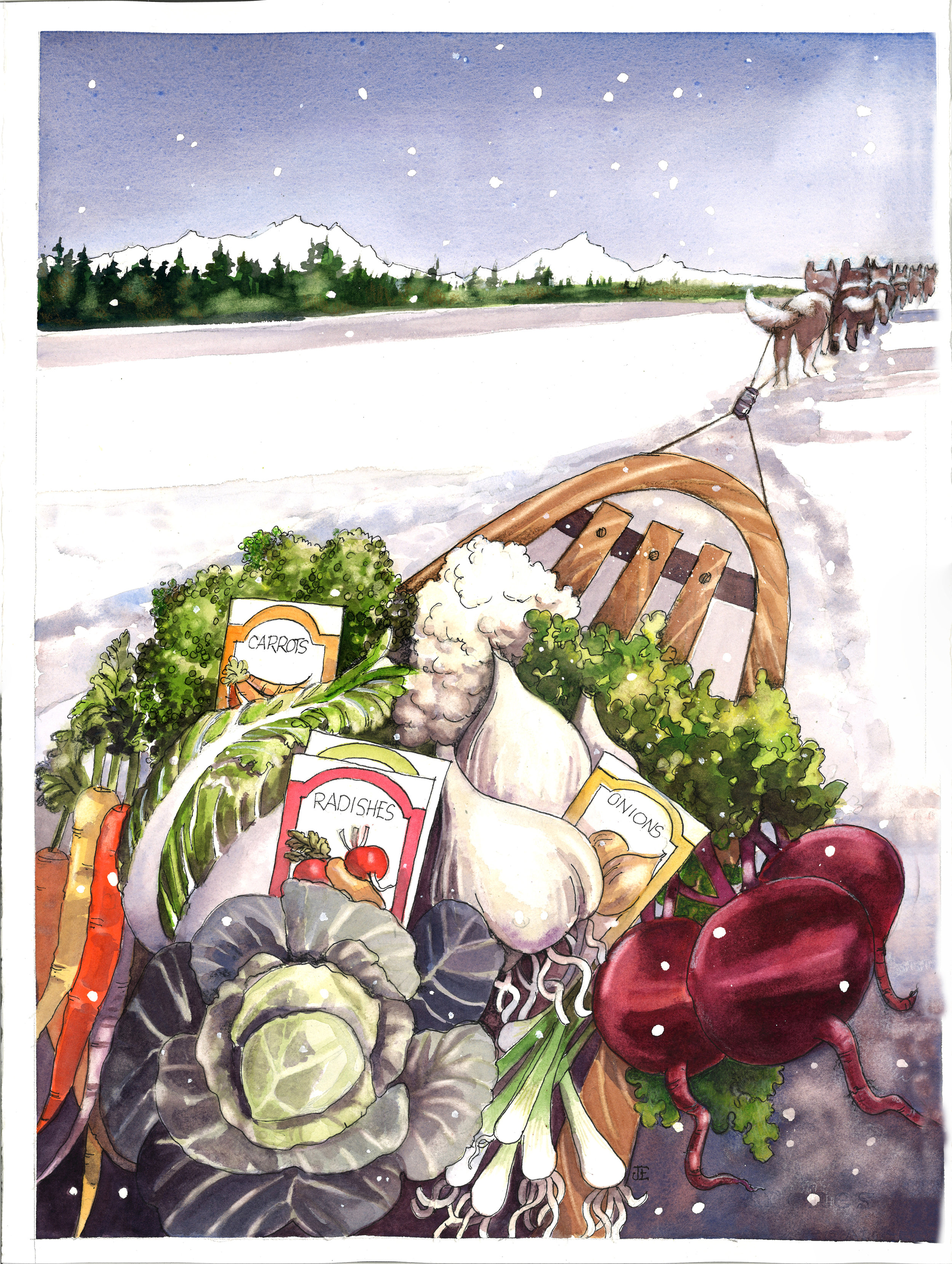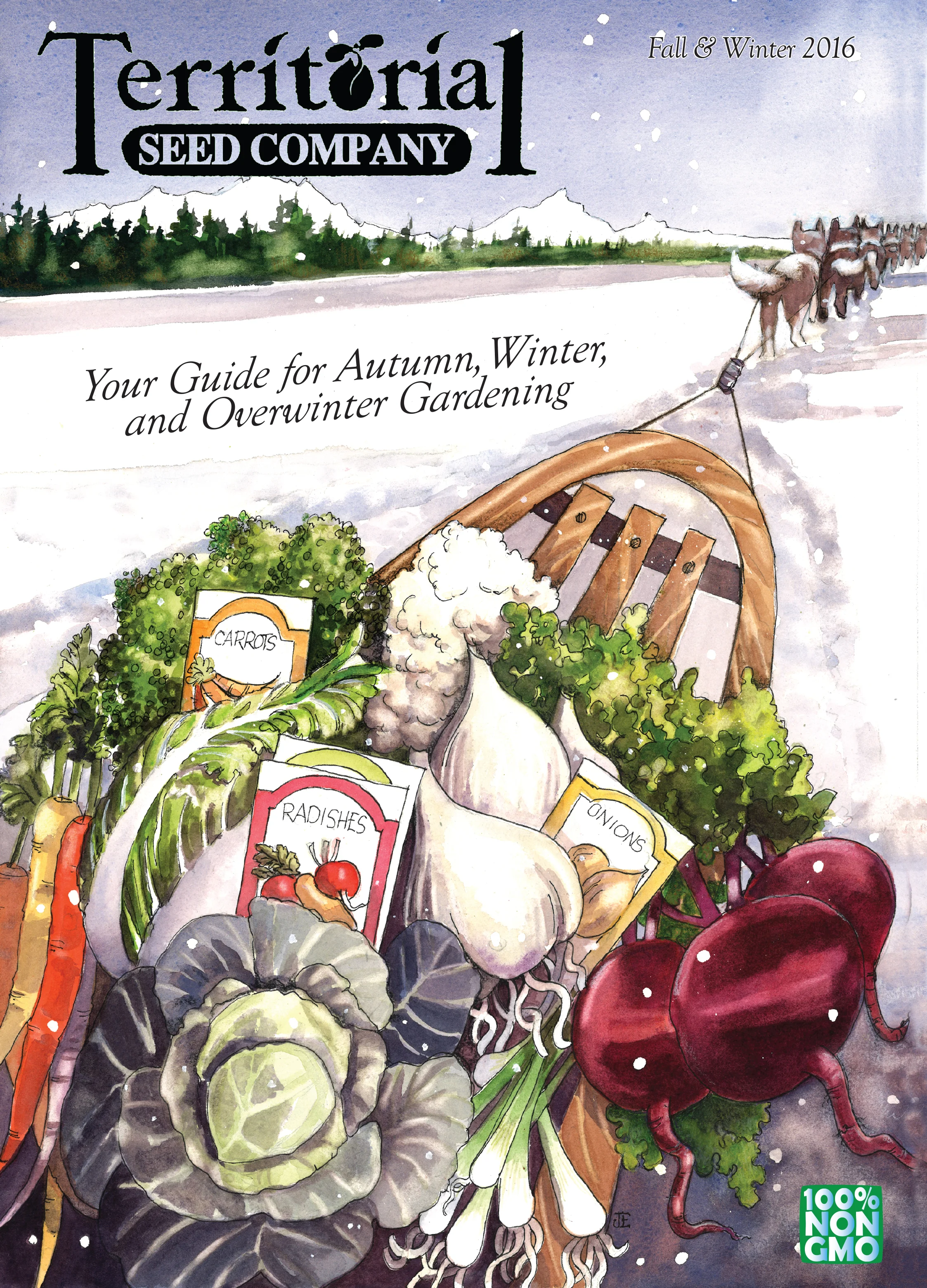Fall & Winter Gardening Catalog Sneak Peek
Cover art by Joneile Emery: www.joneileemery.com
Many of you grow a summer garden every year, but perhaps have been unsure about planting a winter garden. We’ve developed this winter catalog as guide to help you extend your food gardening season, and thus be as self-reliant on your own food supply as possible even during the winter season.
Why depend on tired supermarket vegetables that are two weeks old and traveled perhaps thousands of miles when you can be eating fresh-from-the-garden food even in the winter? Plan on sowing the winter garden mid-summer and you’ll be harvesting a nutritional powerhouse of vegetables starting in late summer, to autumn, through winter and then over winter into spring!
Some of the most antioxidant rich foods on earth, those packed with anthocyans and fiber can be harvested and enjoyed in the cooler seasons!
Here is a look at some of the new items you will be able to add to your garden this summer:
Mulberry Cauliflower
Mulberry Cauliflower: 85–95 days. One of the most unusual and exotic cauliflowers we’ve encountered. Strong, upright plants produce nicely wrapped pastel purple colored heads. A cross-section piece has the appearance of being a white cauliflower that’s been dip-dyed in lilac. After cooking, the color deepens to a blue-purple, and a dash of vinegar on a raw floret turns it to a brilliant magenta.
Dazzling Blue Kale
Dazzling Blue Kale: 50–60 days. If you’re a fan of the ever-popular Nero di Toscana or dinosaur kale, you’re going to be spellbound by Dazzling Blue! This Oregon-bred variety is a striking twist on the strap-leaf style kales. It sports puckered, brilliant blue-green leaves highlighted with shocking pink midribs. Along with its showy appearance, Dazzling Blue proves to be especially cold-tolerant, surviving sub-freezing temperatures better than other lacinato types.
Socrates Cucumber
Socrates Cucumber: 52 days. Right at home in the winter greenhouse, Socrates thrives and produces even in cooler temperatures and lower light conditions that are common in winter greenhouse environments. Produces very refined, 7 inch long, Beit Alpha type fruit with dark green, delicate skin and a crisp, flavorful snap. Plants show good disease resistance.
A parthenocarpic variety (has the ability to set fruit without pollination. Triggered by low temperatures, short day length, and plant age). Resistant to Powdery Mildew and Scab.
Tye-Dye Mustard Blend: 60–70 days. These fast-growing, specialty mustard varieties have a mildly spicy, signature mustard flavor that sweetens when lightly cooked. A festival of colors, shapes and textures make Tye-Dye pretty enough to be an ornamental. We suggest spreading it around the yard—in containers, the edible landscape, and in the garden in successive plantings, so you’ll have a continuous harvest throughout the late summer, fall and winter. Contains an equal blend of Tye-Dye, Ragged Red and Red Fingers mustards.
Tye-Dye Mustard Blend
Sweet & Spicy Blend: 30–50 days. Having a constant supply of fresh greens during the winter keeps your meals nutritionally balanced and delicious. This flavorful blend of kales and mustards will help you do just that! Scattering the seed in open flats indoors every couple of weeks, then transitioning the plants to the outdoors or cloches will provide non-stop harvests of fresh, tender greens from baby green size on up to full size. Contains Southern Giant Curled, Dragon Tongue, Ruby Streaks, Sawtooth and Tah Tsai mustards mixed with our Wild Garden Kale Blend.
Sweet & Spicy Blend
For anyone who has never had a winter garden: here is our Winter Gardening Chart (or click here to view it on our website) to give you an idea of what you can start planting this summer. Happy gardening!












